
The Joseph F. Loubat was a 19th-century Sandy Hook pilot boat built in 1880 at the Jacob S. Ellis shipyard in Tottenville, Staten Island. She was the largest of the pilot-boats in the Sandy Hook service. In 1896 she was one of the last pilot-boats that were sold in an age of steam and electricity.

The James Stafford was a 19th-century Sandy Hook pilot boat built in 1888 for the New York Pilots. She took the place of the pilot boat Enchantress, that was lost in the Great Blizzard of 1888. She was named after James Stafford, one of the oldest and prominent shipping men of Brooklyn. She sank near Sandy Hook in 1898 when she ran into the Dry Romer shoal. At that time, the Stafford was one of the oldest pilot-boats still in service in a time when they were being replaced with steam pilot boats.
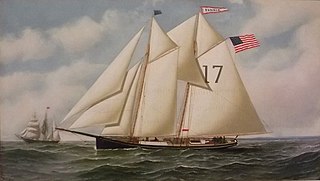
The Fannie was a 19th-century Sandy Hook pilot boat built in 1860 by Edward F. Williams at his shipyard in Greenpoint, Brooklyn for New York City pilots. She was in the pilot service during the American Civil War. In an age of steam, she was sold in 1896.

The America, No. 21 was a 19th-century pilot boat built in 1880 for the New York City and Sandy Hook Pilots. She was a replacement for the William H. Aspinwall, No. 21, that was lost off Point Judith, Rhode Island in 1880. She weathered the Great Blizzard of 1888. In the time of steam, the America was sold in 1896 by the New York Pilots. A new pilot-boat America was built in 1897 for Captain James H. Reid of Boston and designed from the line drawings by Thomas F. McManus of Boston. After serving 21 years in the Boston Pilots' Association, the America was sold to David W. Simpson of Boston in 1918.

The Charles H. Marshall, was a 19th-century Sandy Hook pilot boat built by Henry Steers in 1860 for a group of New York pilots. She was in the Great Blizzard of 1888, the same year the National Geographic came out with an article about the successful struggle made by the crew of the Marshall. The boat was named in honor of the American businessman Charles Henry Marshall. In the age of steam she was sold in 1896.

The Edward F. Williams, was a 19th-century Sandy Hook pilot boat, built in 1863 at the Edward F. Williams shipyard in Greenpoint, Brooklyn for a group of New York Pilots. She survived the Great Blizzard of 1888. In the age of steam, the Williams was sold in 1896.

The Mary A. Williams, was a 19th-century Sandy Hook pilot boat, built in 1861 by the shipbuilder Edward F. Williams in Greenpoint, Brooklyn, for a group of New York pilots. She was named Mary Ann Williams after the wife of the builder. The boat was considered one of the finest connected with the pilot service. She survived the Great Blizzard of 1888. In the age of steam, the Mary A. Williams was sold in 1896.
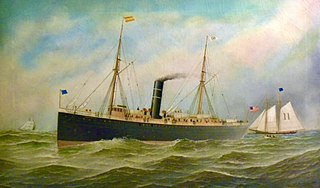
The Ezra Nye was a 19th-century pilot boat, built in 1859 by the Wells & Webb shipyard in Greenpoint, Brooklyn for a group of New Jersey and Sandy Hook Pilots. She was one of the pilot-boats that was in the Great Blizzard of 1888, that was one of the most severe blizzards in American history. In 1896, in the age of steam, the Ezra Nye along with other pilot boats, were replaced with steamboats.

The Jesse Carll,, was a 19th-century pilot boat, built in 1885 by Jesse Carll at Northport, New York, for George H. Sisco. She was one of the largest vessels ever built in the Sandy Hook service. She was named in honor of Jesse Carll, a well-known Northport shipbuilder. In 1896, in the age of steam, the Ezra Nye along with other pilot boats, were replaced with steamboats.

The New Jersey was a steam pilot boat built by A. C. Brown & Sons of Tottenville, Staten Island in 1902 for the New York and New Jersey Pilots' Association. After twelve years of service, the steamship SS Manchioneal rammed and sank sank her off Ambrose Lightship in 1914. The New Jersey was replaced by the pilot boat Sandy Hook.

The Edward E. Barrett, or Edward E. Bartlett was a 19th-century two-masted Sandy Hook pilot boat, built by C. & R. Poillon in 1883 and designed by William Townsend. She helped transport New Jersey maritime pilots between inbound or outbound ships coming into the New York Harbor. She was one of the pilot boats that survived the Great Blizzard of 1888. In the age of steam, the Barrett ended her pilot commission and was sold in 1904.

The Caprice, was a 19th-century Sandy Hook pilot boat built in 1871 by Brown & Lovell in East Boston, Massachusetts for Peter McEnany and other New York pilots. In 1876, she was run down and sank, off Bay Ridge, Brooklyn, by the steamship New Orleans. She was raised and was one of the pilot boats that survived the Great Blizzard of 1888. The Caprice was last reported sailing off the coast of New York in 1891.

Edmund Blunt was a 19th-century New York pilot boat built in 1858 by Edward F. Williams for the New York Pilots. She helped transport New York City maritime pilots between inbound or outbound ships coming into the New York Harbor. She survived the Great Blizzard of 1888. In the age of steam, the Blunt along with other pilot boats, were replaced with steamboats. She was built to replace the Jacob L. Westervelt, which sank in 1857.
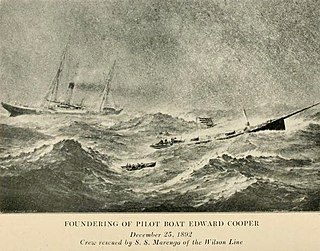
The Edward Cooper was a 19th-century Sandy Hook pilot boat, built in 1879 for New York Pilots at Greenpoint, Brooklyn. She was named in honor of the Mayor of New York City. The Edward Cooper helped transport New York City maritime pilots between inbound or outbound ships coming into the New York Harbor. She survived the Great Blizzard of 1888. In 1892, the Cooper sank in a snowstorm and was replaced by the Joseph Pulitzer in 1894.
The Mary and Catherine was a 19th-century New York pilot boat built in 1848 by the Jacob Aaron Westervelt shipyard. She was hit and sunk by the steamship Haverton in 1885. The collision was the subject of a court case that went to the Supreme Court of the United States as Devere v. The Haverton. The Mary and Catherine was replaced by the pilot boat William H. Starbuck.
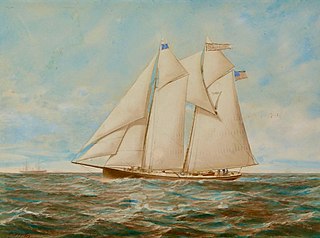
The Edmund Driggs, was a 19th-century Sandy Hook pilot boat built in 1864 at the Edward F. Williams shipyard in Greenpoint, Brooklyn. She was built to replace the pilot boat Elwood Walter. The schooner was used to pilot vessels to and from the Port of New York. She survived the Great Blizzard of 1888. In the age of steam, she was sold in 1896.

The Enchantress was a 19th-century Sandy Hook pilot boat built in 1851 by John Maginn who named her after one of the cast in the opera The Enchantress. She was launched from the Westervelt & McKay shipyard. The Enchantress was one of the oldest pilot-boats in the service. She was Cornelius Vanderbilt's favorite pilot boat. The Enchantress went down with all hands in the Great Blizzard of 1888. The pilot boat James Stafford was built to replace her.

Jacob Samson Ellis, was a 19th-century prominent shipbuilder in Tottenville, Staten Island. He had a large successful shipyard business for over thirty years, with a reputation for his skill in designing vessels. Ellis died in Tottenville in 1902. His son, Hampton C. Ellis, continued with the shipyard constructing boats through the 1920s.

Thomas D. Harrison was a 19th-century New York pilot boat built for New Jersey pilots. She was launched from the Jacob S. Ellis & Son shipyard, at Tottenville, Staten Island in 1875. The Harrison went ashore in the Great Blizzard of 1888 with no lives lost. She continued as a pilot boat with Pilot Stephen Cooper in command. She was purchased in 1897 by Allerton D. Hitch and used for coastal trade in the Cape Verde islands off the west African coast.
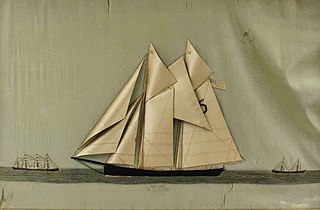
W. W. Story was a 19th-century New Jersey pilot boat built in 1874 at the Samuel H. Pine shipyard in Greenpoint, New York. She sank off Sandy Hook horsehoe during the Blizzard of 1888. She was raised and turned into a fishing smack. On November 13, 1896, she was reported missing along with her crew after being last seen along Absecon, New Jersey when she was caught up in a hurricane.



















